Zoho Inventory is a popular cloud-based inventory management system built for small to medium-sized businesses. It offers features like stock tracking, order management, warehouse visibility, and integration with Zoho’s broader business suite.
However, while it's a decent starting point for inventory management, many fast-growing eCommerce and DTC brands eventually outgrow its capabilities.
Where Zoho Inventory Falls Short:
- Less e-commerce-specific focus
- Bundling and kitting can be less intuitive
- Basic forecasting with no intelligent replenishment logic
- Steep learning curve and cluttered UI for new users
- Scalability challenges for high-volume or complex warehousing
- Over-reliance on Zoho Ecosystem for full functionality
If you're facing any of these limitations, here are the 10 best Zoho Inventory alternatives to consider:
1. Sumtracker
Sumtracker is a modern inventory management solution built specifically for multichannel DTC brands. It excels at handling bundles, kits, and real-time inventory syncing across platforms like Shopify, Amazon, Etsy, and Walmart.
Trusted by fast-scaling eCommerce brands, it simplifies operations without the steep learning curve of traditional systems.
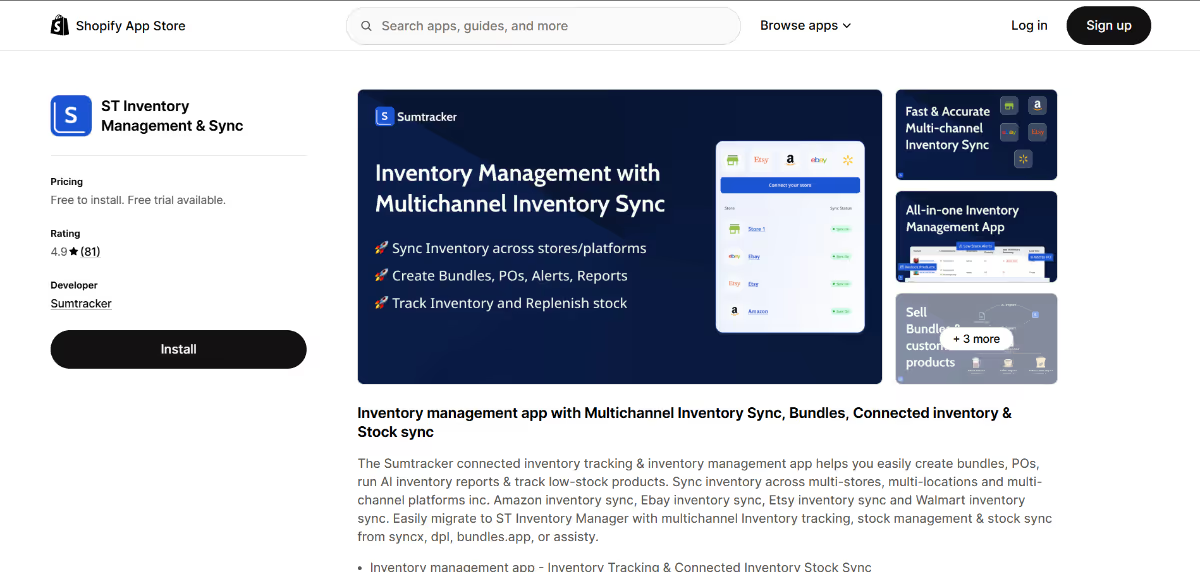
Key Features:
- Real-time inventory sync across Shopify, Amazon, Etsy, and Walmart
- Advanced bundle and kit management
- Multi-location tracking
- Purchase orders, stock transfers, and adjustments
- Simple, clean dashboard with actionable insights
Pros:
- Shopify-recommended app
- Excellent support for DTC and multichannel workflows
- Easy to use even for non-technical users
Cons:
- No built-in accounting module
- Currently focused more on e-commerce than wholesale
Pricing: Starts at $49/month
Why it’s better than Zoho Inventory:
Sumtracker offers stronger multichannel sync, smarter bundle logic, and a much easier user experience, making it perfect for fast-scaling e-commerce brands.
2. Cin7 Core (formerly DEAR Systems)
Cin7 Core is a powerful inventory and operations platform built for mid-market businesses. It offers deep manufacturing, B2B, and accounting features, making it a comprehensive solution for complex workflows beyond basic inventory tracking.
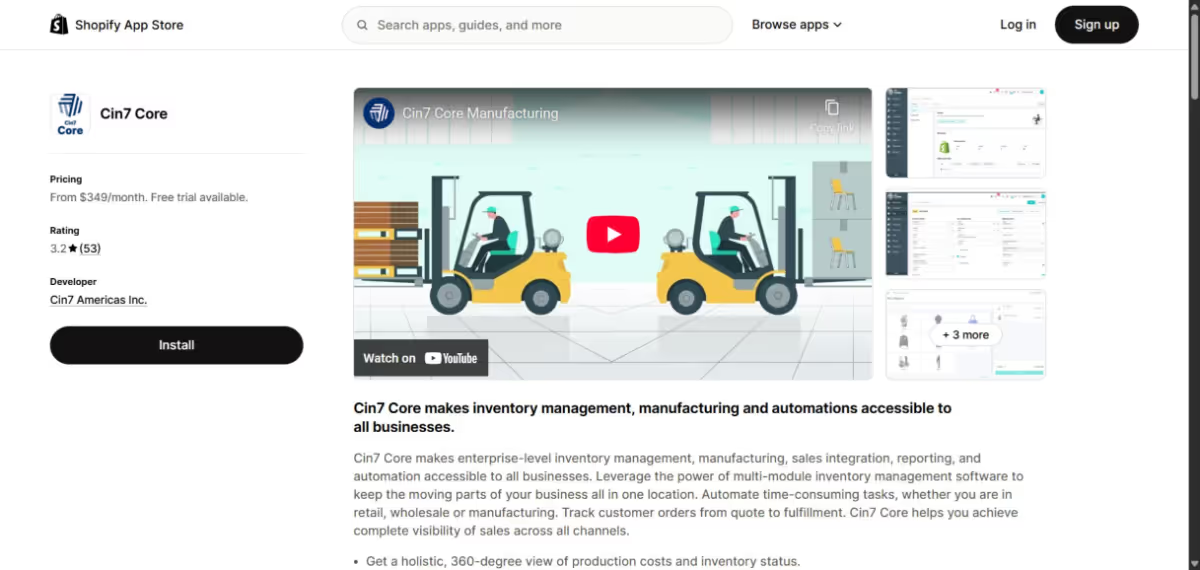
Key Features:
- Batch and serial number tracking
- Advanced purchasing and supplier management
- Manufacturing support (BOM, production)
- Integration with Xero, QuickBooks, Shopify, Amazon
- B2B portal and automation features
Pros:
- Handles complex workflows and scaling operations
- Deep accounting and financial control
Cons:
- Expensive for small teams
- Requires onboarding time
Pricing: Starts at $349/month
Why it’s better than Zoho Inventory:
Cin7 Core offers ERP-level functionality and manufacturing workflows that Zoho Inventory lacks, making it a better choice for scaling and multi-department teams.
3. Katana Cloud Inventory
Katana is a modern inventory and production management system tailored for small to mid-sized manufacturers. With a visual interface and real-time stock control, it helps streamline raw material tracking, BOMs, and order fulfillment for in-house production teams.
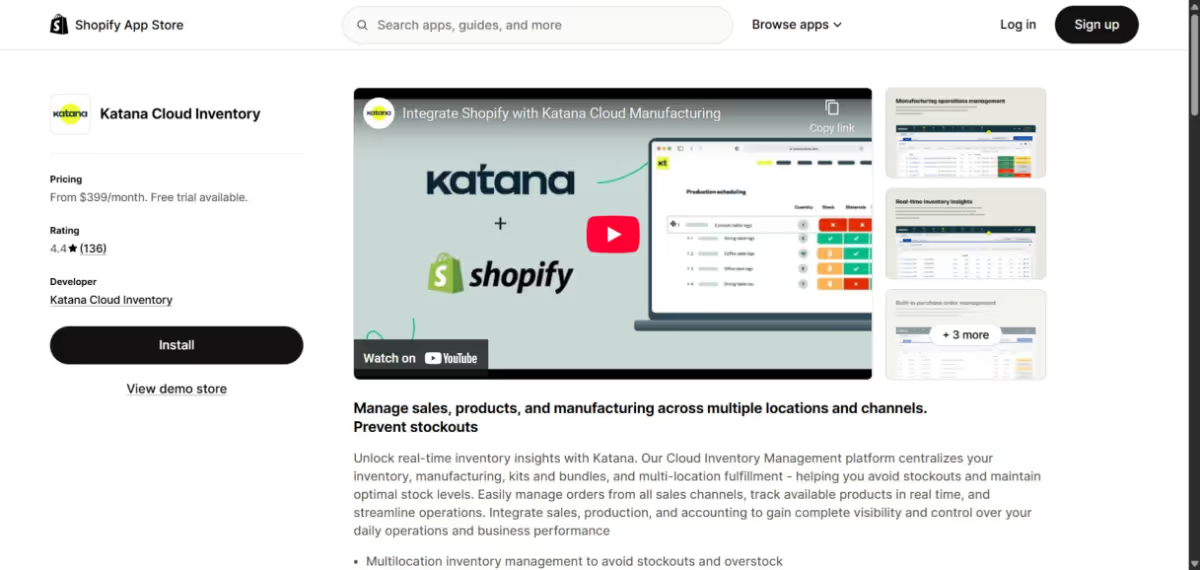
Key Features:
- Real-time stock updates across production and sales
- Visual production scheduling
- BOM and raw material tracking
- Shopify, WooCommerce, and accounting app integrations
- Batch tracking and barcode support
Pros:
- Excellent for brands that manufacture in-house
- Clean and visual interface
Cons:
- Less suitable for dropshippers or resellers
- Limited support for Amazon/eBay integrations
Pricing: Starts at $349/month
Why it’s better than Zoho Inventory:
Katana fills the manufacturing gap left by Zoho Inventory with a seamless flow between raw materials, production, and inventory.
4. Inventory Planner by Sage
Inventory Planner by Sage is a demand forecasting and replenishment planning tool built for modern eCommerce brands. It helps businesses avoid stockouts and overstocking by generating intelligent purchasing recommendations based on historical sales data and lead times.

Key Features:
- Demand forecasting and automatic replenishment suggestions
- Multi-location inventory planning
- Overstock and dead stock reporting
- Integrations with Shopify, Amazon, BigCommerce, and more
- Purchase order automation and vendor insights
Pros:
- Powerful forecasting engine
- Saves working capital by improving inventory decisions
- Easy to use with plug-and-play integrations
Cons:
- Doesn’t offer warehouse or fulfillment features
- No built-in order or shipment management
Pricing: Custom pricing available
Why it’s better than Zoho Inventory:
While Zoho Inventory has basic inventory visibility, Inventory Planner gives you actionable insights to plan smarter purchases, helping you grow profitably with better cash flow control.
5. Unleashed Software
Unleashed is an inventory-first platform best suited for manufacturers and wholesalers. It focuses on advanced stock control, batch tracking, and integrations with accounting systems making it a great fit for regulated or B2B industries.
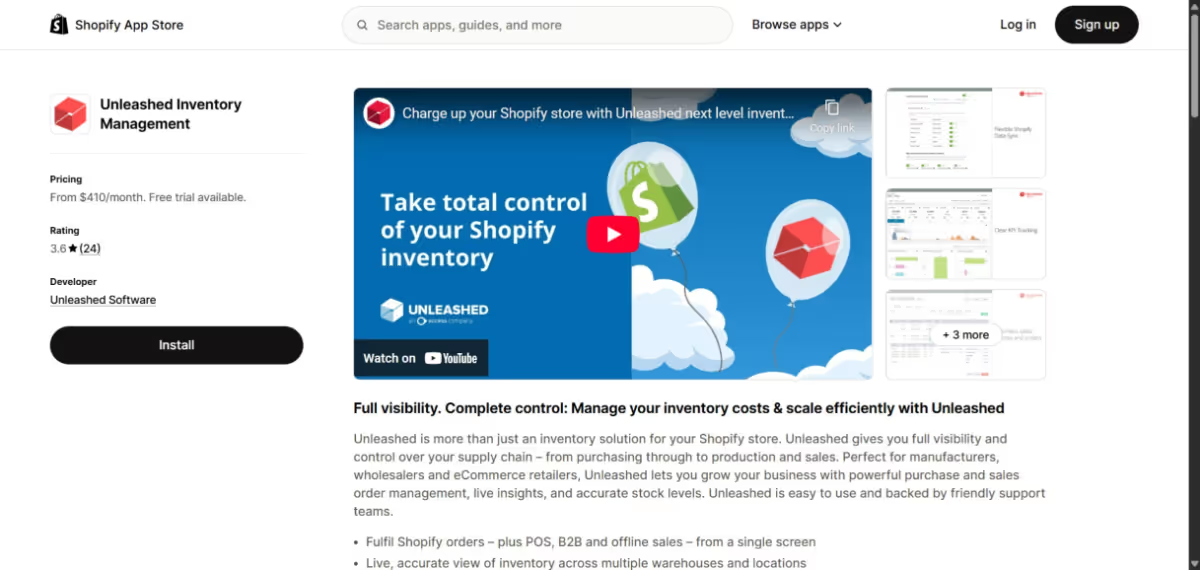
Key Features:
- Real-time inventory visibility
- Batch and expiry tracking
- Raw material and production management
- Integration with Xero, QuickBooks, Shopify
- BOM and component tracking
Pros:
- Excellent batch tracking and traceability
- Ideal for B2B and food/health compliance
Cons:
- No native forecasting tools
- Complex for eCommerce-only businesses
Pricing: Starts at $410/month
Why it’s better than Zoho Inventory:
Unleashed is ideal for inventory-heavy businesses that need batch tracking and production control, something Zoho lacks.
6. Fishbowl Inventory
Fishbowl is a warehouse-centric inventory solution with strong barcode and manufacturing capabilities. It’s ideal for businesses that need detailed warehouse operations, work orders, and integration with accounting tools like QuickBooks.
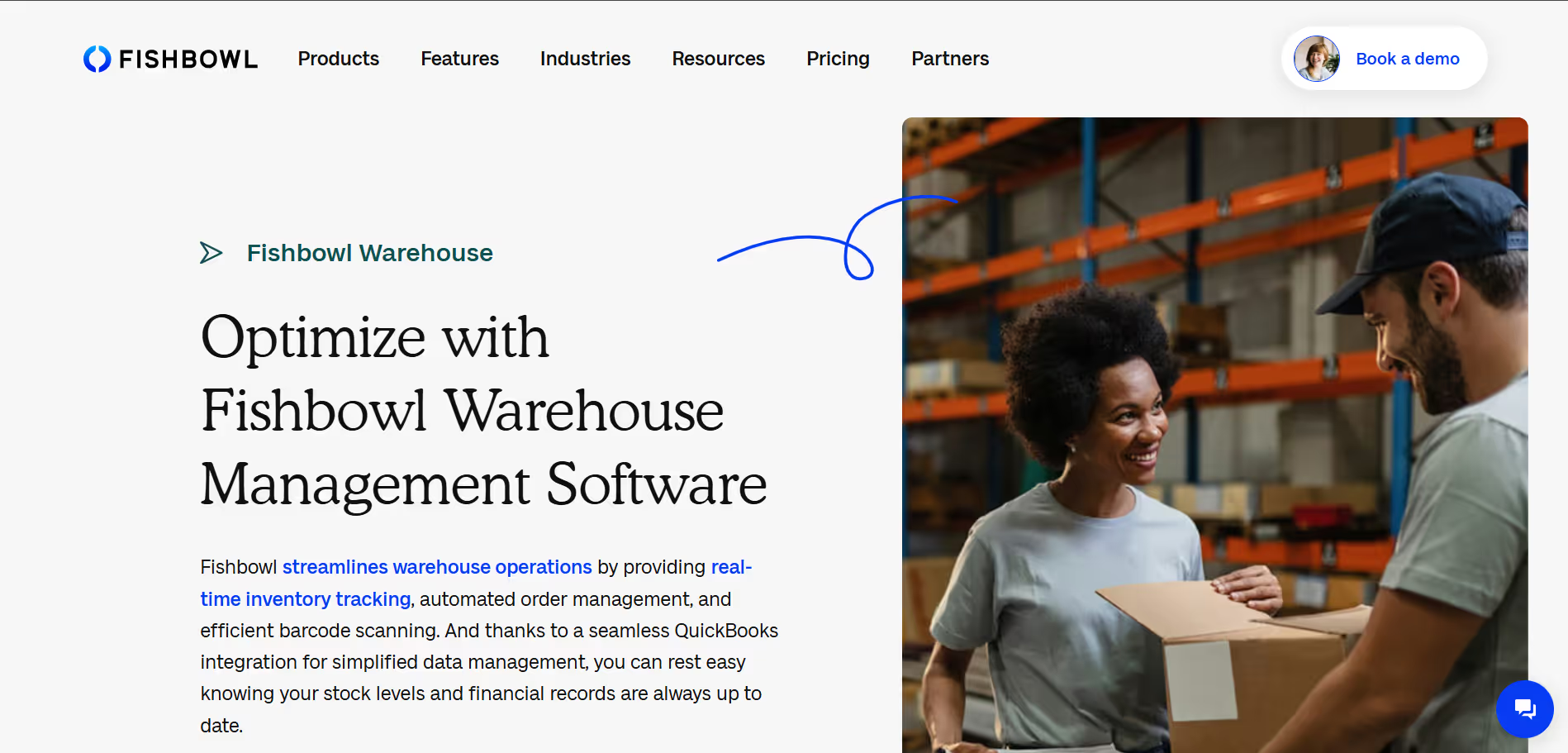
Key Features:
- Advanced warehouse management
- Barcode scanning
- Manufacturing and work orders
- Multi-location inventory
- QuickBooks and Xero integrations
Pros:
- Strong warehouse and production modules
- Good for barcode-based operations
Cons:
- Requires server or desktop installation in some versions
- Dated interface
Pricing: Custom pricing (typically higher upfront fees)
Why it’s better than Zoho Inventory:
Fishbowl is better suited for warehouse-driven operations and barcode-heavy businesses that need deeper control.
7. Linnworks
Linnworks is a powerful multichannel inventory and order management tool built for high-volume sellers. It connects marketplaces like Amazon, eBay, and Walmart, centralizing operations and automating fulfillment workflows.
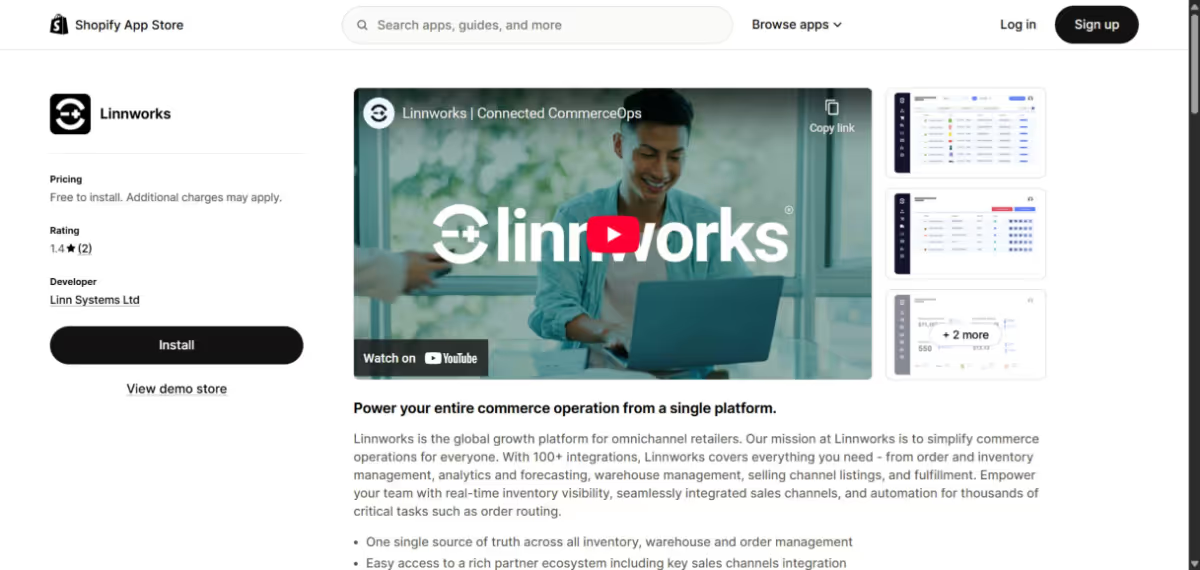
Key Features:
- Real-time sync across Amazon, eBay, Walmart, Shopify, etc.
- Order routing and fulfillment
- Shipping label generation
- Rule-based automation
- Reporting and analytics
Pros:
- Strong automation engine
- Scales with growing order volume
Cons:
- UI can be confusing
- Higher learning curve
Pricing: Custom pricing (starts around $500/month)
Why it’s better than Zoho Inventory:
Linnworks provides a centralized platform for true multichannel selling, far more robust than Zoho’s limited integrations.
8. Sortly
Sortly is a lightweight, visual inventory app perfect for small businesses and teams on the go. It focuses on simplicity and mobile-first usability, offering QR/barcode scanning and easy categorization without overwhelming users with complexity.
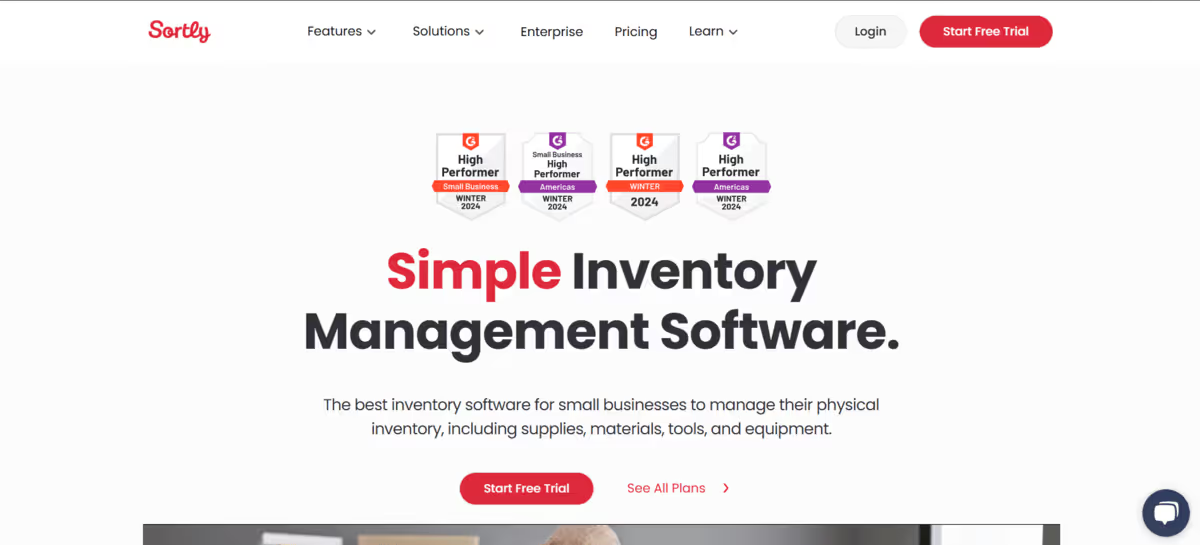
Key Features:
- Visual inventory tracking
- QR and barcode scanning
- Mobile app for on-the-go access
- Activity history and custom fields
- Alerts and tagging
Pros:
- Super intuitive and quick to deploy
- Great for teams needing mobile access
Cons:
- Limited integrations
- Not built for high SKU volume or complex workflows
Pricing: Starts at $24/month
Why it’s better than Zoho Inventory:
Sortly is much easier to use for small teams and doesn’t require the heavy setup that Zoho Inventory demands.
9. InFlow Inventory
InFlow is a straightforward inventory and order management tool designed for small to mid-sized businesses. It includes barcode tracking, invoicing, and purchase order features, making it great for businesses transitioning from spreadsheets.

Key Features:
- Barcode inventory tracking
- Order and invoice management
- Purchase order generation
- Basic CRM and vendor management
- Report exports
Pros:
- Easy onboarding
- Works offline (Windows app) and on cloud
Cons:
- Fewer integrations
- Basic automation
Pricing: Starts at $149/month
Why it’s better than Zoho Inventory:
InFlow’s simplicity and built-in order processing make it ideal for teams overwhelmed by Zoho’s complexity.
10. SKULabs
SKULabs combines inventory management with order fulfillment, making it a great all-in-one tool for growing eCommerce teams. It’s especially useful for sellers who need barcode picking, shipping label creation, and multichannel syncing in a single platform.
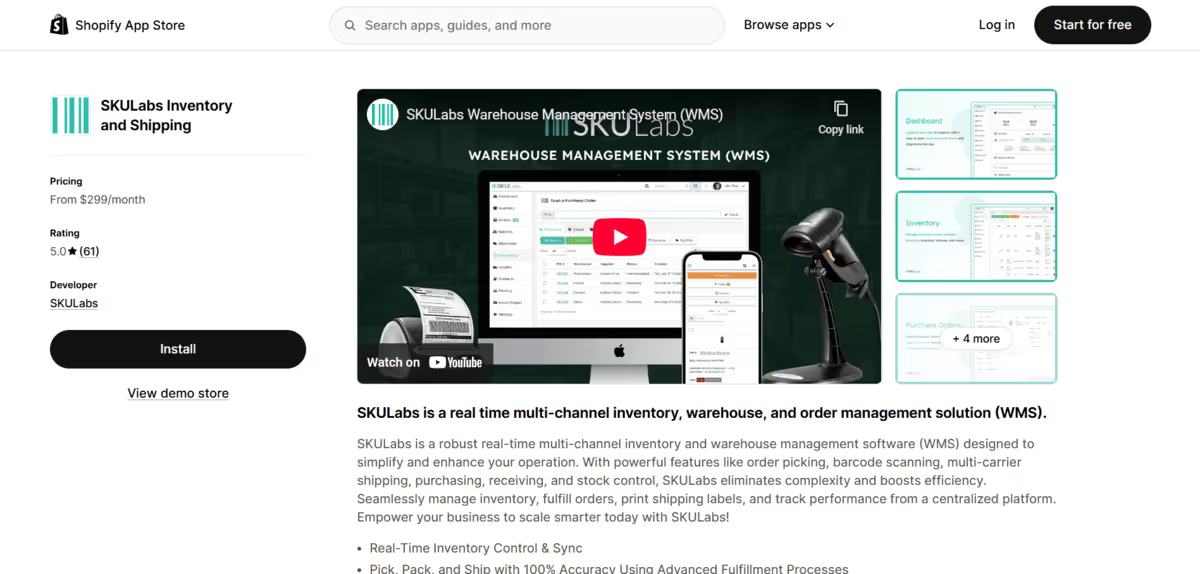
Key Features:
- Multichannel syncing with Amazon, Shopify, Etsy
- Barcode-based picking and packing
- Built-in shipping rate comparison and label printing
- Purchase orders and inventory logs
Pros:
- Ideal for high-volume pick/pack/ship workflows
- Combines inventory + fulfillment in one tool
Cons:
- Limited forecasting
- Higher pricing for growing teams
Pricing: Starts at $299/month
Why it’s better than Zoho Inventory:
SKULabs adds fulfillment logic and warehouse scanning areas where Zoho Inventory is largely absent.
Conclusion
Zoho Inventory is a solid entry-level tool, especially for businesses already operating within the Zoho ecosystem. But as your operations scale, you may quickly hit roadblocks with its limited forecasting, bundling, and multi-channel support.
Whether you're a DTC brand selling across platforms, a manufacturer needing production tracking, or a warehouse-heavy operation requiring barcode and batch control, there’s a better-fit solution out there.
Choose the one that aligns best with your growth stage, workflows, and operational complexity because your inventory system should empower scale, not slow it down.
Start your free trial with Sumtracker today!
Conclusion
Ready to Simplify Your Inventory Management?
Join hundreds of e-commerce merchants who rely on Sumtracker to save time, eliminate errors, and grow their business.
.svg)



.png)
.avif)